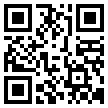October 21, 2024 8 Min Read
From Tension To Teamwork: Resolving Conflict For A Productive Workplace

Unfortunately, workplace conflict is as common as coffee runs and printer jams, but unlike those minor annoyances, unresolved conflict can have serious consequences for your team and your business.
The good news? With the right approach, you can turn these moments of tension into opportunities for growth and collaboration.
Let’s get into it.
An Introduction To Workplace Conflict
Let’s face it: wherever there are people with other people, there’s bound to be some sort of conflict sooner or later.
But what exactly do we mean by workplace conflict?
It’s essentially any situation where people’s ideas, goals, or personalities clash. It’s not always a dramatic showdown. It can be as subtle as eye rolls in meetings or passive-aggressive emails.
Common causes? You’ve probably seen them all:
- Communication breakdowns (ever played a game of corporate telephone?)
- Differing values or goals (like when sales want to promise the moon, but product knows we can barely deliver a pebble)
- Resource competition (two departments, one budget – need I say more?)
But here’s the thing, addressing these conflicts requires courage.
As Coach Vesna Lakovic van Kempen wisely puts it, “What’s important and often missed is that you often need courage.”
This courage isn’t just about speaking up; it’s about protecting our boundaries, values, and self-perception. It’s about being willing to step into uncomfortable conversations for the sake of healthier relationships and a more productive workplace.
So, the next time you feel that familiar tension brewing, remember: it’s not just about resolving a disagreement. It’s an opportunity to flex your courage muscles and grow as a leader.
The Undesirable Impact Of Unresolved Conflict
So, we understand what workplace conflict is all about, but why not just let it go? Everyone has conflicts from time to time, right? It’s character-building.
Unresolved tension from last week’s project meeting is still lingering in the air like day-old coffee breath. People are being passive-aggressive towards one another, they’re distracted, and they’re making mistakes.
That’s just the thing. The feelings that come with conflict don’t go away easily. They linger, turn into resentment, and compound.
Unresolved conflict in the workplace is like that houseplant you keep forgetting to water – it might look okay for a while, but eventually, it’ll wither and die. The consequences can be just as ugly.
So, what happens when we sweep our workplace disagreements under the rug? Let’s break it down:
-
Productivity takes a nosedive: Have you ever tried to focus on your work while also avoiding eye contact with half your team? It’s about as effective as trying to type with oven mitts on.
-
Morale goes out the window: Nothing kills team spirit faster than unaddressed tension. It’s like trying to have a dance party where half the room isn’t speaking to the other half. Awkward and not very fun.
-
Stress levels skyrocket: Constant conflict is like being stuck in a never-ending game of office politics. It’s exhausting, and it can lead to burnout faster than you can say, “I quit.”
-
Innovation and creativity? Forget about it: When people are busy guarding their turf or avoiding confrontation, they’re not exactly in the headspace for groundbreaking ideas.
But here’s where it gets really interesting. Coach Vesna Lakovic van Kempen shares this advice: “It is healthier to enter the conflict. This prevents the buildup of resentment and avoids the risk of the relationship ending.”
When we avoid addressing conflicts, we’re not just postponing an uncomfortable conversation; we’re allowing resentment to build up.
The longer you leave it, the worse it gets.
How To Fix It – Actions To Resolve Workplace Conflict
With the problem set in our minds, it’s time to fix it, and fortunately, there’s a simple strategy that can help make this a little simpler.
Let’s break it down.
Step #1 – Encourage Open Communication
First things first: we need to get people talking.
And we don’t mean the kind of talking that happens around the water cooler when someone’s not in the room. We’re talking about real, honest, face-to-face communication.
- Active Listening Techniques: Active listening is about being fully present. Try this:
- Make eye contact (but don’t stare like a creeper)
- Nod and use verbal cues to show you’re engaged.
- Summarize what you’ve heard to ensure understanding.
- Creating A Safe Space For Dialogue
This isn’t about building a pillow fort in the conference room (though that does sound fun). It’s about creating an environment where people feel comfortable expressing their thoughts without fear of repercussion.
- Set ground rules for respectful communication
- Ensure confidentiality
- Choose a neutral location for discussions.
Step #2 – Identify The Root Cause
Now that we’ve got people talking, it’s time to play detective and find the real issue. Often, what people argue about isn’t the real problem – it’s just a symptom.
- Asking The Right Questions: Channel your inner toddler and keep asking “why?” (but maybe limit it to 5 times, unlike actual toddlers). Some good questions to start with:
- “What does success look like to you in this situation?”
- “How has this conflict affected your work?”
- “When did you first notice this issue?”
- Separating Emotions From Facts: Emotions in conflicts are like spice in cooking – a little adds flavor, too much, and it’s all you can taste. Help parties distinguish between emotional reactions and objective facts.
- Use “I” statements to express feelings.
- Focus on specific behaviors rather than character judgments.
- Take breaks if emotions run high.
Step #3 – Collaborate On Solutions
This is where the magic happens. We’re not looking for a winner and a loser here – we want a win-win solution.
- Brainstorming Techniques: Get creative! I once resolved a conflict over office temperature by having a “crazy ideas” brainstorming session. We ended up with desk fans, personal blankets, and a rotating thermostat schedule. Problem solved, and we had fun doing it.
- Use mind mapping
- Try the “Yes, and…” technique from improv.
- Encourage wild ideas – you can always reign them in later.
- Finding Common Ground: Look for shared interests and goals. Maybe both parties want to improve team efficiency; they just have different ideas on how to get there.
- Identify mutual benefits
- Focus on shared values.
- Look for compromise opportunities
Step #4 – Implement and Follow Up
The work isn’t over once you’ve found a solution. Now, it’s time to put it into action and make sure it sticks.
- Creating Action Plans: Get specific here. Who’s doing what, by when? I like to use the SMART goal framework:
- Specific
- Measurable
- Achievable
- Relevant
- Time-bound
- Monitoring Progress & Adjusting As Needed: Your solution isn’t set in stone. Be prepared to tweak and adjust as you go.
- Schedule regular check-ins
- Be open to feedback
- Celebrate small wins along the way
Remember, resolving conflict is a skill, and like any skill, it gets better with practice. Don’t expect perfection right off the bat.
The important thing is that you’re taking steps to address issues head-on, creating a more harmonious and productive workplace in the process.
Tools And Techniques For Conflict Resolution
In addition to the steps above, it’s important that you, as a leader, have a resolution toolbox in mind for when things get a little choppy. These are strategies and techniques to help you sort things out successfully.
-
Mediation: Sometimes, you need a neutral third party to help navigate choppy waters. Bringing in a mediator can be like hiring a translator – suddenly, they people start speaking the same language!
-
Conflict Resolution Workshops: Coach Vesna emphasizes the importance of self-awareness here: “People are often not aware of how they communicate and that their way of talking is aggressive to someone, or their humor can be badly received by others.” Conflict resolution workshops can be a transformative experience for everyone involved.
-
Team-Building Exercises: Nothing breaks down barriers like shared experiences. Whether it’s an escape room challenge or a charity project, these activities can help build empathy and understanding. As Vesna puts it, “Building a non-judgmental attitude can help you build empathy and compassion.”
-
Digital Platforms for Anonymous Feedback: Sometimes, people need a safe space to voice concerns. These platforms can be like a pressure release valve for your team.
-
Mindfulness Practices: Here’s a gem from Coach Vesna: “Practice mindfulness. Practice this in communication with others. Notice when you have prejudice outward towards others, negative opinions and attitudes.” Incorporating short mindfulness exercises in meetings can be a total game-changer.
-
Practice Emotional Intelligence: Vesna advises, “Get in touch with your emotions. If you are holding grudges or feeling more and more annoyed, there is obviously something there.”
Remember, the goal here isn’t to eliminate conflict entirely (sorry, but unless you’re running a company of zen masters, that’s not happening). Instead, it’s about creating an environment where conflicts can be addressed openly, honestly, and productively.
Here’s a final nugget of wisdom from Coach Vesna: “Have the courage to enter conflict. Don’t avoid it. Be courageous.”
Remember, conflict in the workplace isn’t a sign that something’s wrong – it’s a sign that you have a team of diverse thinkers who care about their work. The key is how you handle it.
The next time you feel that familiar tension brewing, don’t run and hide. Channel your inner conflict resolution superhero (cape optional, but recommended for dramatic effect).
Embrace the discomfort, have those crucial conversations, and watch as your team transforms into a well-oiled, problem-solving machine.
And remember, with tools like TaskHuman at your fingertips, you’re never alone in this journey. Book a session now to get personalized guidance from a TaskHuman coach.
P.S. If you found this guide helpful, why not share it with a colleague? After all, the more conflict-resolution superheroes we have out there, the better!






